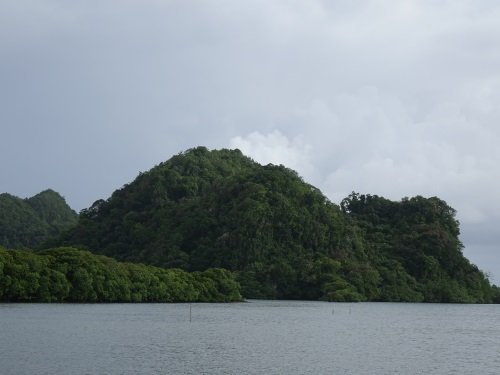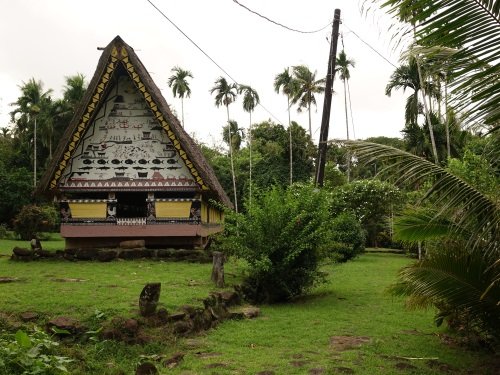Els Slots
Palau and the Yapese Stone Money
Palau’s best chance of a second WHS is the serial transnational nomination of the Yapese Disk Money Regional Sites / Yapese Quarry Sites . This collection of 4 locations in two countries has already been brought forward in 2010, but ended up with a Deferral advice from ICOMOS and a subsequent withdrawal of the nomination by the Federated States of Micronesia (representing Yap) and Palau. They will try again in (possibly) 2018.

Palau played an important role in the origin and practice of the use of stone disk money on Yap. Although the island state lies almost 500km away, with its fine limestone it provided the source for producing the large disks that were used on Yap as stone money. In 1883 it was reported by judicial commissioner G.R. Le Hunte that he found around 100 Yapese at Palau cutting stones and preparing them for transport.
The two locations on Palau included in the original nomination are called ‘Uet el Doab ma Uet el Beluu’ and ‘Chelechol ra Orrak’. After the discussion we recently had on the Forum and some further research, I’m quite sure that both are located on the island of Orrak (the former in the interior, the latter near the beach). I found the original ICOMOS evaluation of 2010, which sheds further light on the boundaries of this nomination. The locations on Orrak Island are both quarry sites.

Orrak is a tiny island, which was connected to Airai Village in Babeldaob “by a prehistoric causeway constructed of coral rubble now covered in mangrove vegetation”. From the harbour of Airai this causeway is still visible, although it’s also easy to see that it is broken down by water in one or two places. The Yapese did not just go and take the stone disks from Palau: they had arrangements with the traditional owners of the lands for the quarrying rights, and brought gifts from the chiefs of Yap to the chiefs of Palau.
In the case of Orrak Island, this meant the chiefs of the village of Airai. In its evaluation, ICOMOS argues that there is at least an intangible relationship between the quarry sites on Orrak and the village of Airai. Therefore the village itself could be part of the revised nomination or at least the buffer zone. On my first day driving around Babeldoab, I checked out Airai too. It has probably the finest example of a traditional bai (men’s meeting house) of Palau.

Unfortunately I did not have the time to arrange a visit to Orrak Island while on Palau, although I was tempted to speak to one of the fishermen present at Airai to take me across. Which locations finally will end up in the new nomination is not clear: ICOMOS requested a further justification of the selection of these two sites on Orrak Island, as there are at least nine other documented quarry sites on Palau (including the already inscribed Omis Cave (part of Rock Islands WHS ) and the one tourists get sent to, Metuker ra Bisech).
More on
Els SlotsComments
No comments yet.
